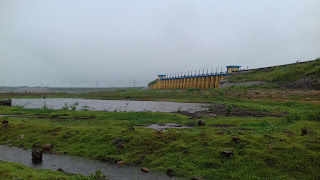How would you like it if you tried to explain a point to a child, or teach a topic to a student, or convey a message to an audience, and have them listen to you with rapt attention, complete concentration and a lot of interest?
This was the question that set the agenda for the Workshop on 'Power of Storytelling' held at Al Qamar Academy on October 26th, 2019. The Workshop was conducted by Nazreen Sheriff, a British Council Certified CELTA Qualified Educator and Founder of Smart English Academy.
It was a half-day workshop to understand and learn-
- The impact of stories
- How to communicate through stories
- Elements of Storytelling and
- Techniques of Storytelling
All put together with a hands-on experience at STORYTELLING.
Heads of educational departments and institutions, teachers, social workers, businesswomen, homemakers and others from various professions attended the session with the primary aim of understanding storytelling and enhancing their communication and presentation skills.
The Workshop started with the participants introducing themselves with a ball game, stimulating them to shed their inhibitions and break the ice.
Various inputs were given on the power and impact of stories. It was demonstrated by a powerful narration of a story of an African woman, by the facilitator, Nazreen Sheriff, to drive home the message of the importance of water conservation.
At the end of the story, there was pin drop silence. The tears in some people's eyes and the anguish on others' faces said it all.
The power and impact of a story was experienced by all.
Drawing encouragement from the inputs and confidence given in the training, the participants took their first step and attempt at Storytelling.
A participant’s story that had a woman's husband give her his credit card and tell her to go shopping in Dubai, drew a witty response from one of the ladies in the audience. She said 'Now I truly understand why stories are supposed to be imaginative and a fantasy'
Storytelling as a teaching technique was discussed in detail. Addressing the problem and difficulty of the non-English teachers' perception of not having scope for stories in their subjects, the facilitator Nazreen Sheriff demonstrated a Math and Science story. The teachers were visibly excited at the prospect and possibilities and looked forward to implementing them in their classroom.
Handouts were given to help sum up some of the learning done. Physical activities were interspersed with the discussions and demonstrations. The ladies thoroughly enjoyed them and plunged into it with gusto and enthusiasm.
The session ended with the floor being opened up for questions and feedback from the participants.
Altogether, it was an interactive and dynamic session, drawing appreciation from all the participants for the valuable insights and learning achieved in the Workshop. The verbal and written feedback was very positive with many of the participants summing it up as-
"Excellent workshop conducted by specialist, Nazreen Sheriff. Benefited greatly. "– Social Worker
"Amazing tips and techniques on Storytelling. "– Teacher, IMAX SCHOOL
"Useful and Informative. Plan to use this to introduce concepts in the classroom" – Vice Prinicipal IMAX SCHOOL
"Before coming I was very nervous about talking in front of people. Thoroughly enjoyed the learning experience. "– Homemaker





















































